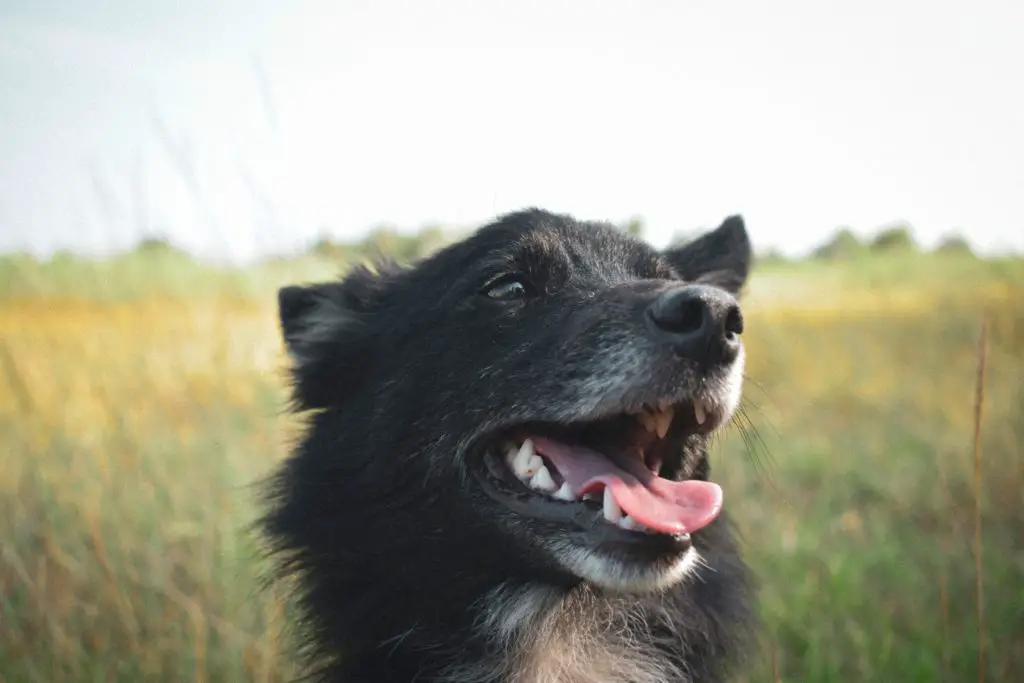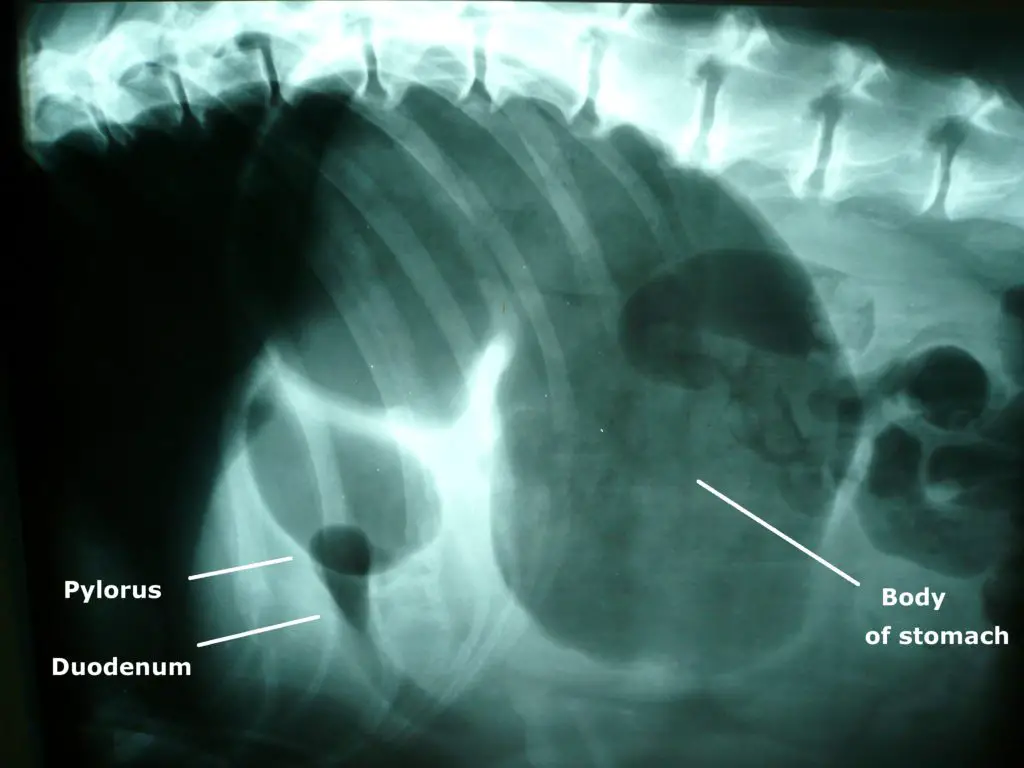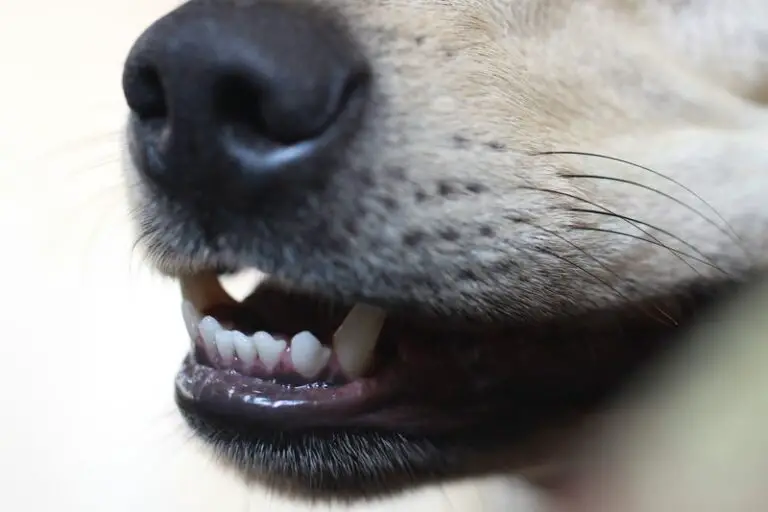Dog Won’t Lay Down? – [8 Common Reasons Why & How to Fix It]
A restless puppy or dog can be seen as a sign of an illness. Although, in some cases, the situation is usually not that drastic. Finding a dog that simply won’t lay down should not be taken lightly. If you’re in a situation where you’re finding that your dog won’t lay down here are 10 common reasons why this is happening and how you should go about finding a solution.
#1 – Joint pain
It is not uncommon for dogs to have some type of joint pain or arthritis. This condition is usually mildly painful or simply uncomfortable for dogs but, can be corrected by a veterinarian. Over-the-counter dog joint pain supplements are also an option that will help your dog with dealing with any pain the condition may bring.
Joint pain supplements, though are helpful, should only be taken to help dogs deal with the pain. This should not be taken as a substitute for the dog’s occasional visit to the veterinarian.
Does your dog seem to be walking or running very awkwardly?
Very large breed dogs are often prone to developing a type of dysplasia in their hip joints. This just means that it is common for a dog’s hip joints to pop out of the sockets from time to time.
Signs of hip dysplasia can be seen as early as a dog’s first year of life. The condition eventually worsens over time and becomes much more noticeable and uncomfortable for the dog if not corrected professionally by a veterinarian as soon as possible.
Some other symptoms that can be easily seen are a weakness of the dog’s hind legs which will result in a rabbit-like running form or the dog won’t lay down.
#2 – Anxiety

A dog’s anxiety is flared up whenever they are nervous, scared, lost, or confused, which are also many similar reasons a human’s anxiety might flare up. You may find that a dog will refuse to lay down if they are put in an uncomfortable position they have never been in before such as their environment.
A dog’s first bath,their first car ride, being around unfamiliar faces or a trip to the veterinarian will usually cause your dog’s anxiety to skyrocket. Dogs will usually tuck their tails in between their legs, scan the room relentlessly with their eyes, and prop their ears up to be as alert as possible.
Seeing these three things in a dog will usually clearly determine that they are not satisfied with their current situation.
Calming a dog down and getting them to relax will loosen their tenses up a bit can be a helpful trick for getting a worried dog to lay down.
There are several things that an owner can do to help a dog to calm down fast.
- Massage their head and back
- Chew toys and play toys
- CBD Chewables For Dogs
- Playing games such as fetch and tug-of-war
- Going for a quick jog or run
- Talking to them in a soothing, calm, relaxed tone
After a dog calms down from being anxious or has tired themselves out they will usually go to take a nap or lie down.
#3 – Unsatisfactory Bedding
Ever noticed how hard and uncomfortable the floor is when laying on it? Dogs sure do. Having a soft, plush, and comfortable place for your dog to sleep will encourage them to spend more time in their beds.
Sleeping on blankets or old towels spreading across the floor will usually be enough to convince puppies and smaller dogs to lay down but this practice may not work on a particularly larger dog breed.
Having multiple beds will also double the chances that your dog will go there to take a quick nap or to just relax their paws.
Did you know that dogs sleep for about 12-14 hours per day? It’s true. Puppies will even go as far as sleeping for up to 20 hours per day sometimes. Check out this article on sleep.org to learn more about your dog’s sleep schedule.
Simply upgrading bedding options can work wonders in getting a dog to lay down.
I have found that when a dog is first introduced to the bed, they may not like it or find it to be rather overwhelming. However, around week 2 of using the bed dogs will fall in love with the comfort.
#4 – Gastric Torsion

Gastric Torsion AKA twisted stomach is a medical condition where a dog’s stomach has either flipped, rotated, or overstretched due to excessive gas buildup. This condition is extremely uncomfortable and painful in dogs and results in mortality rates up to 60% even with treatment.
A few common symptoms of Gastric Torsion in dogs are
- Dog won’t lay down (restlessness)
- Anxiety
- Thick, drooling saliva
- Red, swollen abdomen
- Fast & short breathing patterns
- Trouble or inability to urinate or defecate
If you suspect that your dog is exhibiting signs of gastric torsion, it is recommended that you schedule for the dog to visit a veterinarian as soon as possible in order to start implementing a correct plan of action and to view your options along with the necessary steps to take going forward.
It will require a veterinarian to diagnose a dog with the condition, but it is usually not hard to tell if the condition is present in a dog. Treatment for this condition involves surgery, followed by close monitoring and treatment.
To learn more about Gastric Torsion in dogs and what one can do to help treat a dog diagnosed with the condition click here to read the in-detailed article created by Wikipedia.
#5 – Potty Time

When dealing with a dog that won’t lay down, nine times out of ten, they are on the verge of exploding. It is not rare to find younger dogs that go potty up to 30 times a day. During a dog’s early stages in life, the dog’s owner will find that their new puppy can’t seem to stop peeing or pooping.
A dog owner will soon realize that they must take their puppy to go potty extremely often in order to not risk certain bladder infections or making messes all over their floor.
Due to the fact that a full bladder is simply hard and uncomfortable to sit on for anybody, dogs will stand continuously and whine in a desperate attempt to alert their owner that they need to go potty as soon as possible. (Or else)
Here are some potty-training tips and tricks for all new dog owners that will assist in teaching their puppy how to use a puppy pad before transitioning to using the potty outside in the grass.
It is essential to train a dog in order to teach them the necessary skills needed to be a helpful and cooperative member of the household as opposed to just being a pet.
#6 – Excited
An excited pup is a force to be reckoned with. Their tails will wag from left to right, their tongue will droop, the panting will increase, they will hop all over your body, but one thing they will not do is lay down.
I’m sorry, I have no ways to fix this one. You’re just going to have to wait until your dog simmers down a bit. Which could take anywhere from a few minutes to about an hour usually, depending on the dog’s cause for being so filled with joy and excitement.
When a dog is at the peak of its excitement it will be basically impossible to get them to lay down very easily without any sort of positive reinforcements. Positive reinforcement is just a way to bribe a dog into performing a given task.
Treats are the most commonly used tool of positive reinforcement.
Lucky for you, after a dog releases all their happiness, it will want to get some rest.
Though, there are many different methods that one can use to calm their dog down such as tiring them out by playing a game or two with them or by implementing simple brain training exercises that will exhaust them mentally. By doing this, most dogs will surely want to lay down afterward.
#7 – Stress

Humans, as well as dogs share a ton of similarities, one of them being the ability to become stressed. Believe it or not, dogs are capable of becoming stressed as well.
Many dogs show signs of stress similar to how humans show signs of stress. Here are some symptoms that will easily determine a stressed out dog.
- The dog won’t lay down – Many dogs choose to stand voluntarily when they are stressed simply because sitting or laying down might only increase stress. Being active will usually help to deter their minds away from whatever is causing the stress.
- Hair loss – A dog’s hair will fall out in clumps and leave very noticeable bald patches on their skin which will usually occur first behind a dog’s ear, their stomach, or on their backs.
- Graying hair – Strands of gray hair will begin to develop usually on the back of their neck or their mouths in the beginning and will spread to different parts of their body.
- Increased whining – Many believe that dogs whine just to be annoying but on the contrary, it is discovered that whining in dogs can sometimes be involuntary and more of an automatic response to an external stimulus. Luckily, there are many ways to train your dog to stop whining.
- Pacing – Pacing can also be seen in very anxious dogs which will eventually lead to them being stressed.
- Pregnancy – A pregnant dog’s body can release tons of hormones that cause sharp and definitive changes in their body language that will eventually stress the dog even further.
Keeping your dog cool, watching what they eat, exercising regularly are all things that one can do in order to relieve their dog of some of the stress they carry.
#8 – They’re Just Bored
The level of activeness varies extremely among differing breeds of dogs. For example, an English Bulldog is considered to be a very inactive dog when compared to a Labrador Retriever.
Seeing a dog that will prefer to stand, rather than lay down can be because their breed instincts will simply signal to them that they should be playing a game, running around outside, chasing a cat, or anything that allows them to utilize their uncontrollable activeness.
Although standing won’t necessarily satisfy them to their fullest extent, dogs will often prefer to stand than sit because they may feel like standing up may eventually lead to play time.
If there are any local dog parks in the area, then taking a dog there can be a great idea to get them to socialize with other dogs and interact with their outside surroundings.
Also, just going for long walks with dogs and giving them a means of exploration will satisfy their lack of activeness.
Training a dog will also stimulate them both physically and mentally. Dogs need to be trained in order to develop their much-needed skills. Implementing active training schedules with a dog can produce an all-around happier puppy or dog.
Dog Won’t Lay Down Panting
If you notice that your dog refuses to lay down and is breathing heavily or panting here are some quick fixes to solve the problem.
- They’re dehydrated – Remember, always be hydrating! A heavily panting dog is a sure sign that they are in need of water.
- They’re hot – It is best to keep your dog cool to avoid panting. Dogs need to be kept cool regularly because their bodies are covered with fur that is to protect them from freezing during the winter but, can also cause them to overheat during hotter months of the year.
Dog Can’t Get Comfortable Lying Down
If you’re finding that your dog can’t get comfortable lying down, the best option would be to simply upgrade some of your dog’s bedding options. Dogs will quickly outgrow their beds or wear it down until it no longer satisfies them the way it initially did. Other issues may be because of joint pain or a prior injury owner may be unaware of.
dog panting pacing won’t lay down
For dogs that simply walk back and forth very consistently, chances are that the dog is extremely anxious or stressed. This pacing action is very common in pregnant female dogs simply due to the fact that when the mother is pregnant her body releases tons of hormones that may influence her behaviors.
Conclusion
If you sense that your dog is suffering from a serious illness and won’t lay down then please contact your dog’s veterinarian as soon as possible. Please be sure to view your solutions as to why your dog refuses to lay down then.
I hope this article has been helpful in providing information as to what dog owners can do to help there dog get comfortable again in order to get some rest.








